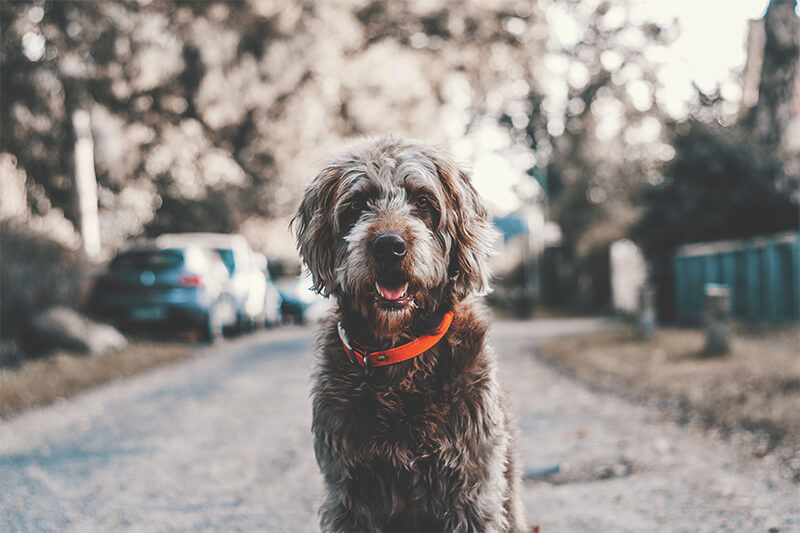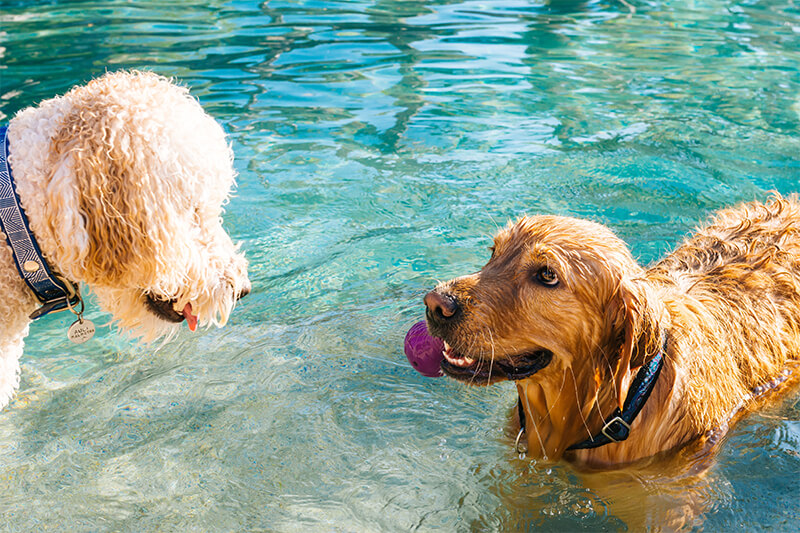Top tips for exercising your arthritic dog

Exercising your arthritic dog
Dogs with OA may no longer be able to keep up with their old exercise routine but it is essential to encourage activity to prevent stiffening of joints, weight gain and muscle wastage. It is, however, important to adapt your dog’s exercise regime so as not to exceed their capabilities which could place further stress on their joints and exacerbate the progression of their OA. Your vet will be able to give you specific advice regarding the amount and type of exercise suitable for your dog. Take a look below for some general advice to get you started:
- It is not only important to keep our arthritic pets active to keep their joints working, but also to ensure that they maintain a decent quality of life. For many dogs the best part of their day is their ‘walkies’, while they may be less able to zoom around once they get older, they will generally still enjoy the stimulation of going out on a walk. Their walks can still be a great part of their day if we adapt our routes, distances and expectations to meet their abilities.
- Arthritic dogs will benefit from controlled exercise. Gentle regular lead walks are better than an hour spent running around after a ball or with another dog. {Each dog will vary in their capability to do different activities, it is a balance of working out what works best for your canine companion so that they can have a good time, but are not left crippled the next day.}
- Pain may be masked by adrenaline. If your dog is out with other dogs and is excited running around, they may not feel the pain from their joints as they play; however, you may find they then struggle when they get home or the following day. Ideally we want to avoid these periods when are pets are worse following their exercise, so it may be up to us as their owners to limit how much they do. (Most dogs don’t have the foresight or sense to do this!)
- ‘Little and often’ is the best approach when it comes to exercising arthritic pets. It may suit them better to take them on several short walks each day, rather than one long walk.
- Keep their exercise pattern as regular as possible – try to avoid short walks during the week and a really long walk at the weekend.
- Not only do we need to consider the distance that we walk our arthritic pets, but also the terrain upon which we ask them to walk. Sand, gravel and rocks underfoot can exacerbate an unstable gait, and may be particularly difficult to navigate if your dog is trying to protect certain painful joints as they move. We should also think about the gradient on which they are walking; going up and down steep hills puts excessive pressure on the downhill joints and may be painful for them. Flat, smooth, even ground, such as a grassy field, is the ideal terrain for an arthritic dog.

- While we should always consider the weather when we walk our dogs, it becomes even more important to do so if your dog has arthritis. It is well documented in people that cold, wet weather exacerbates arthritic pain; the same appears to be the case with dogs. Their joint pain generally worsens as the temperature falls. This may mean shorter walks through winter, the need for jumpers or coats and perhaps even increased pain relief following veterinary recommendation.
- While perhaps not a popular recommendation – it is best for the management of our dogs’ arthritis that they avoid chasing after balls or playing games which require quick running, jumping or turning. As mentioned above, the adrenaline which is released while they are doing such activities can initially mask the pain, which is only felt later when they get home and the inflammation in their joints has been exacerbated by the high intensity exercise. It is best to avoid these activities altogether, however, if this is really not deemed to be an option then at least minimise the time spent doing them.
- Not only should we be thinking about the walk itself, but also how we get our dogs to and from their walk. If travelling by car, they may need assistance getting into and out of the car. For smaller dogs it may be easy to lift them in and out of the car, to save them trying to do large jumps. If this is not possible with older dogs, then a ramp may be required to assist them. Getting a larger old arthritic dog to learn to use a ramp is likely to require some training and patience
- Some arthritic dogs may benefit from being walked with their lead attached to a harness rather than a collar. This means they are not pulling on their neck, but get a little more support from the harness around their forelimbs.
- Swimming is another fantastic way to exercise an arthritic dog, especially if you are trying to get some weight off them but are restricted by how far they can walk. Swimming enables them to burn some calories and keep their joints moving without worrying about the impact through their joints. If your pet is not a natural swimmer then hydrotherapy is a great way to introduce controlled swimming. Your vet is likely to be able to recommend a local and trusted hydrotherapy centre.
- If your dog is already a keen swimmer, then don’t forget to consider that they may no longer be able to haul themselves out of the water straight onto the bank, so gradual entry/ exit points into/ out of the water are desirable to avoid injury or arthritis flare-ups. It is also important to remember, like us dogs can get caught in currents and tides, so be mindful about where and when you let them swim, especially since they may not be such strong swimmers with their arthritic joints.
It is important to be mindful that acute flare-ups do happen in osteoarthritis (even in the most well-managed cases) – these flare-ups may follow episodes of increased exercise, a fall or twist, or periods of cold weather – and can result in your pet feeling significant pain or discomfort. If symptoms are worsening, or you think your dog may be experiencing an acute flare-up, then you need to revisit your vet as soon as possible.
Return to Care for Elderly Pets
News

